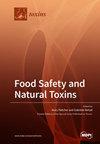一种基于糖蛋白的表面增强拉曼光谱-侧流分析法,用于检测阿布赖恩和蓖麻毒素
IF 3.9
3区 医学
Q2 FOOD SCIENCE & TECHNOLOGY
引用次数: 0
摘要
阿布兰和蓖麻毒素都是第二类核糖体失活蛋白,是备受关注的毒素,受到《化学武器公约》和《生物和毒素武器公约》的国际限制。针对这些毒素开发快速灵敏的检测方法对于第一时间做出应急反应至关重要。新兴的快速检测技术,如表面增强拉曼光谱(SERS)和侧流检测法(LFA),因其灵敏度高、选择性好、操作简便、成本低和可抛弃等优点而备受关注。在这项工作中,我们通过一种高效的冷冻方法生成了稳定的高亲和性纳米标签,作为 SERS-LFA 的捕获模块。然后,我们利用一对糖蛋白(asialofetuin 和 concanavalin A)作为核心亲和力识别分子,构建了一种夹心式横向流动检测条,能够痕量测量阿布林蛋白和蓖麻毒素。阿布林蛋白和蓖麻毒素的检测限分别为 0.1 和 0.3 纳克/毫升。应用该方法分析了 8 个加标白粉样品、1 个果汁样品和 3 个实际植物样品,结果与细胞毒性检测结果一致。该方法的批间重现性和批内重现性良好,可在15分钟内完成检测,表明该SERS-LFA方法适用于现场快速检测蓖麻毒素和阿布赖恩毒素。本文章由计算机程序翻译,如有差异,请以英文原文为准。
A Glycoprotein-Based Surface-Enhanced Raman Spectroscopy–Lateral Flow Assay Method for Abrin and Ricin Detection
Abrin and ricin, both type II ribosome-inactivating proteins, are toxins of significant concern and are under international restriction by the Chemical Weapons Convention and the Biological and Toxin Weapons Convention. The development of a rapid and sensitive detection method for these toxins is of the utmost importance for the first emergency response. Emerging rapid detection techniques, such as surface-enhanced Raman spectroscopy (SERS) and lateral flow assay (LFA), have garnered attention due to their high sensitivity, good selectivity, ease of operation, low cost, and disposability. In this work, we generated stable and high-affinity nanotags, via an efficient freezing method, to serve as the capture module for SERS-LFA. We then constructed a sandwich-style lateral flow test strip using a pair of glycoproteins, asialofetuin and concanavalin A, as the core affinity recognition molecules, capable of trace measurement for both abrin and ricin. The limit of detection for abrin and ricin was 0.1 and 0.3 ng/mL, respectively. This method was applied to analyze eight spiked white powder samples, one juice sample, and three actual botanic samples, aligning well with cytotoxicity assay outcomes. It demonstrated good inter-batch and intra-batch reproducibility among the test strips, and the detection could be completed within 15 min, indicating the suitability of this SERS-LFA method for the on-site rapid detection of abrin and ricin toxins.
求助全文
通过发布文献求助,成功后即可免费获取论文全文。
去求助
来源期刊

Toxins
TOXICOLOGY-
CiteScore
7.50
自引率
16.70%
发文量
765
审稿时长
16.24 days
期刊介绍:
Toxins (ISSN 2072-6651) is an international, peer-reviewed open access journal which provides an advanced forum for studies related to toxins and toxinology. It publishes reviews, regular research papers and short communications. Our aim is to encourage scientists to publish their experimental and theoretical results in as much detail as possible. There is no restriction on the length of the papers. The full experimental details must be provided so that the results can be reproduced.
 求助内容:
求助内容: 应助结果提醒方式:
应助结果提醒方式:


